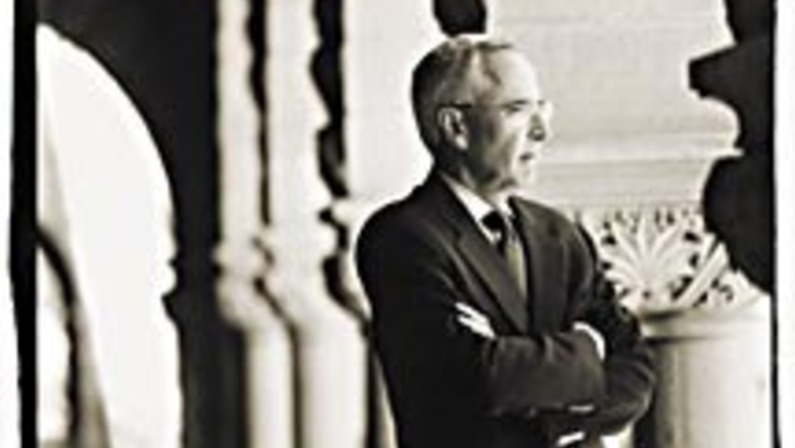
Who Killed Jane Stanford?
New investigations confirm she was poisoned by strychnine, but the case will never be solved. Someone got away with murder.
by Susan Wolfe

America and the Paradox of Power
Dominant but vulnerable, the United States confronts terrorism and growing resentment abroad. How should it respond, and what do its actions say about the country? Six scholars weigh in.

About a Boy
His death broke his parents’ hearts and spawned a university. But who was he? Recent revelations suggest a different Leland Stanford Jr. than many have imagined.
by Theresa Johnston

Cell Division
Stanford researchers say stem-cell study could unlock lifesaving cancer treatments and perhaps even wipe out genetic killers. But critics of the research say moral ambiguity surrounding therapeutic cloning should force science to slow down. The outcome of the debate will affect medicine for years.
by Christopher Vaughan and Kevin Cool

Strong Medicine
Training physicians used to be mostly about drugs and diseases. A curriculum overhaul at Stanford Medical School puts students in touch with patients in their first year, considering the person as well as the pathology.
by Diane Rogers

Color Treatment
At Lucile Packard Children s Hospital, crayons are an important therapeutic device.

The World According to Azim Premji
When he left Stanford 40 years ago, Azim Premji was returning home to run ) ) ) his father and the world economy.
by Joel McCormick
Too Hot To Handle
Everybody talks about global warming, but what should be done about it? Stanford researchers offer some suggestions.
by Joan O’C. Hamilton

Danger Ahead
They tramp through mangrove forests, dive among coral reefs, trap rodents in Montana and scour Antarctic ice looking for clues. Stanford researchers from many disciplines work to learn why global warming is occurring and what can be done about it.
by Joan O’C. Hamilton



